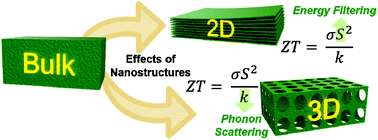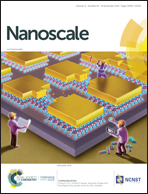2D and 3D nanostructuring strategies for thermoelectric materials
Abstract
Thermoelectric materials have attracted increased research attention as the implementation of various nanostructures has potential to improve both their performance and applicability. A traditional limitation of thermoelectric performance in bulk materials is the interconnected nature of the individual parameters (for example, it is difficult to decrease thermal conductivity while maintaining electrical conductivity), but through the rational design of nanoscale structures, it is possible to decouple these relationships and greatly enhance the performance. For 2D strategies, newly investigated materials such as graphene, transition metal dichalcogenides, black phosphorus, etc. are attractive thanks to not only their unique thermoelectric properties, but also potential advantages in ease of processing, flexibility, and lack of rare or toxic constituent elements. For 3D strategies, the use of induced porosity, assembly of various nanostructures, and nanoscale lithography all offer specific advantages over bulk materials of the same chemical composition, most notably decreased thermal conductivity due to phonon scattering and enhanced Seebeck coefficient due to energy filtering. In this review, a general summary of the popular techniques and strategies for 2D and 3D thermoelectric materials will be provided, along with suggestions for future research directions based on the observed trends.

- This article is part of the themed collections: Editor’s Choice: Thermoelectric nanostructures and Recent Review Articles


 Please wait while we load your content...
Please wait while we load your content...